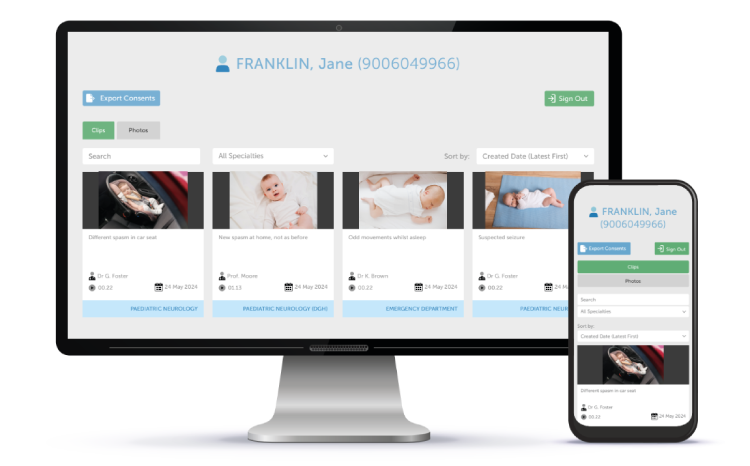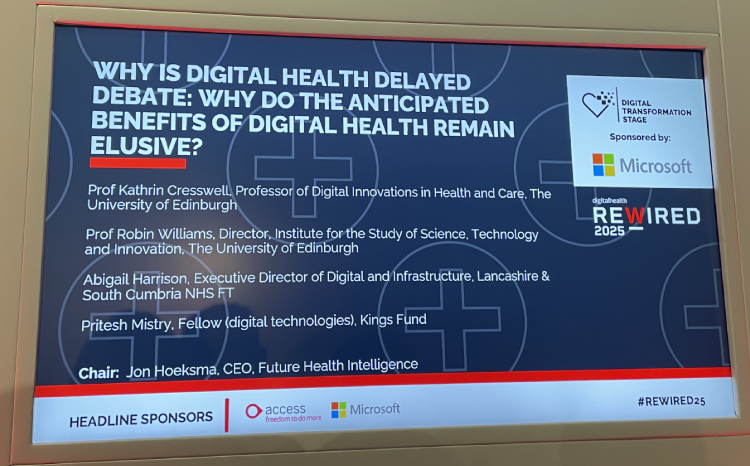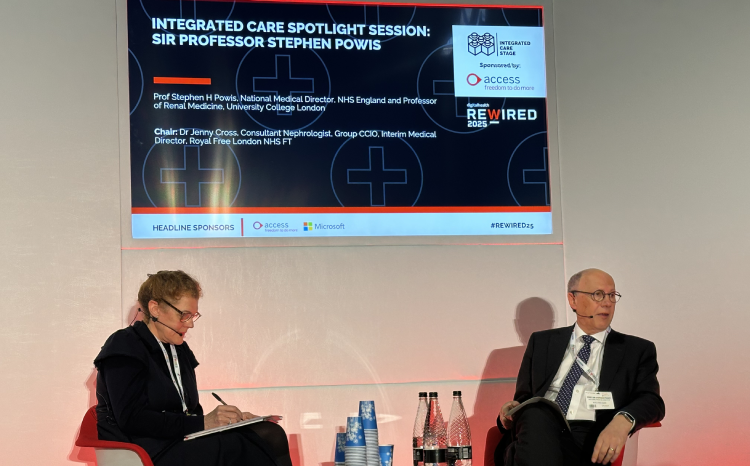Part 1: How can NHS use technology to reduce winter pressures?
- 18 January 2018

As the NHS grapples with a winter crisis, can technology help in alleviating some of the pressures? In this first article of two-part series, we look at how some of the global digital exemplars are using digital to address the demands on the health service.
As more reports emerge about accident and emergency departments in England missing waiting targets, doctors warning about dying patients and hospitals cancelling elective operations until 31 January 2018, the NHS winter crisis shows no sign of abating.
Amid calls for additional money, more resources for social care and increase in staffing levels, an important point that has been missing in most of these discussions (at least in the mainstream media), is the role of technology in alleviating winter pressures.
Which is why Digital Health decided to talk to experts from the world of healthcare and explore the issue in more detail. In this first article of two-part series, we look at how some of the global digital exemplars are using digital to address the demands on the health service.
Sharing information
Jim Ritchie believes digital technologies have an important role to play in supporting clinical activities and service delivery, especially in the current period of winter pressures.
The key, he says, is to make sure digital tools maximise clinical time available to patients, add value to each patient interaction, and never become a barrier to care delivery.
The deputy chief clinical information officer (dCCIO) at Salford Royal NHS Foundation Trust – a global digital exemplar and widely considered one of the most digitally advanced in the country – gives the example of Salford Integrated Record (SIR), which allows clinical teams in secondary care immediate access to primary care data including diagnosis lists, medication history, and physiology.
He says: “Embedding the SIR into our electronic health records supports clinical teams in undertaking quick, confident and complete patient assessments without fear of overlooking key information. In the future, extension of similar information sharing across the Salford ICO and Northern Care Alliance will further benefit clinical assessments and patient safety.”
Patient flow
A key target of NHS trusts is that 95% of patients attending A&E should be admitted, discharged or transferred within four hours. However, it is being constantly missed, and a major reason for this is not efficiently managing the patient flow, leading to congestion in A&Es, delays in discharge, and shortage of bed spaces in hospitals.
Ritchie says to improve the flow, the trust has implemented Trendcare – a software that allows wards to match and change staffing skills and levels based on demand and complexity of patient needs.
Whereas Cambridge University Hospitals NHS Foundation Trust, another acute global digital exemplar, has come up with an app called ‘Choose Well’ to better manage A&E service demand.
Designed by their emergency team and chief clinical information officer, it offers guidance on current ED waiting times and alternative healthcare services across Cambridge to assist people in choosing the right healthcare provider for their health needs.
A spokesperson at their eHospital digital programme says electronic prescribing within the system has streamlined processes. “By integrating the EPR system with the trust’s medication dispensing robot in pharmacy, the preparation of discharge medications has reduced from 90 minutes to 45 minutes, reducing delays in discharging clinically fit patients and freeing up much needed beds.”
She adds: “Best practice clinical decision support with allergy-related prescribing alerts in the EPR system is saving at least 2,450 bed days a year in drug allergy admission avoidance – without this there would be even more pressure on the trust particularly during winter months.”
Joined-up electronic whiteboards
Another example of technology being used to deliver clinical benefits is introduction of electronic whiteboards by University Hospital Southampton NHS Foundation Trust.
The whiteboards were rolled out last year, with an objective to replace handwritten notes, as part of the trust’s move to become one of the 16 acute GDEs.
The touchscreen technology displays information taken directly from a patient’s electronic record, including clinical alerts such as existing medical conditions, length of admission and predicted discharge date. It also acts as a tracking system to identify what is preventing discharge when patients are medically fit to leave hospital.
The project is helping save clinician’s time spent on writing and rewriting patients’ notes as they move across the system – thereby reducing inaccuracies.
However, Michael Fisher, CCIO at Royal Liverpool and Broadgreen University Hospitals Trust, thinks there is need for a joined-up regional whiteboard system across health and social care.
“In our hospital at any one time there are at least 50-75 patients on our ‘medically fit for discharge’ list, who are only in hospital because there is not suitable social care placement for them.
“I think that a region wide whiteboard system for bed management that included all care homes, rehab units etc. could greatly help to speed the discharge of these people since if we could get these people out, it would pretty much solve our bed crisis. This is actually something that we are trying to do at the moment,” he says.
Commonly known bed-blocking in the NHS, delayed transfer of care refers to a situation when a patient is ready to leave a hospital but is still occupying a bed. This can lead to unnecessarily long stays for the patients and longer waiting times at the hospital.
As acute trusts struggle to cope with wider problems facing the NHS and social care, it all comes back to oft-asked question: how can we keep patients out of hospital in the first instance?
In the second article of series, to be published next week, we will examine how primary care and urgent care sector are using digital to respond to these pressures, what is working and how can we accelerate the transformation agenda for next winter.
With inputs from Hannah Crouch and Owen Hughes.





1 Comments
3-D printing more beds might be a start!
Comments are closed.